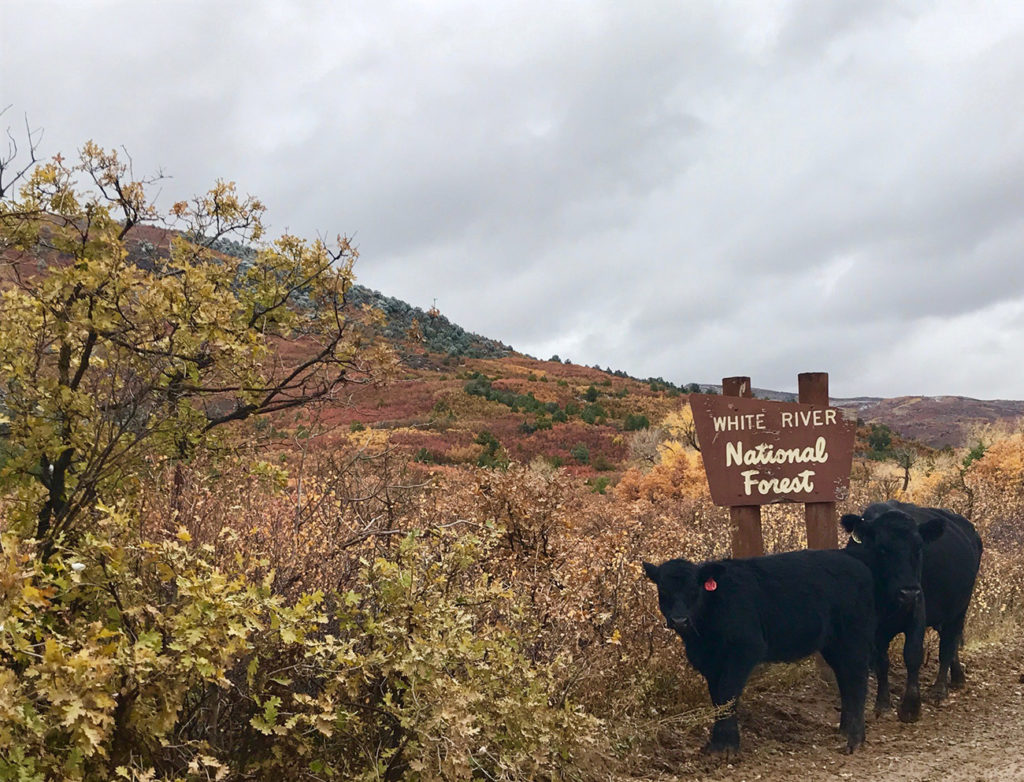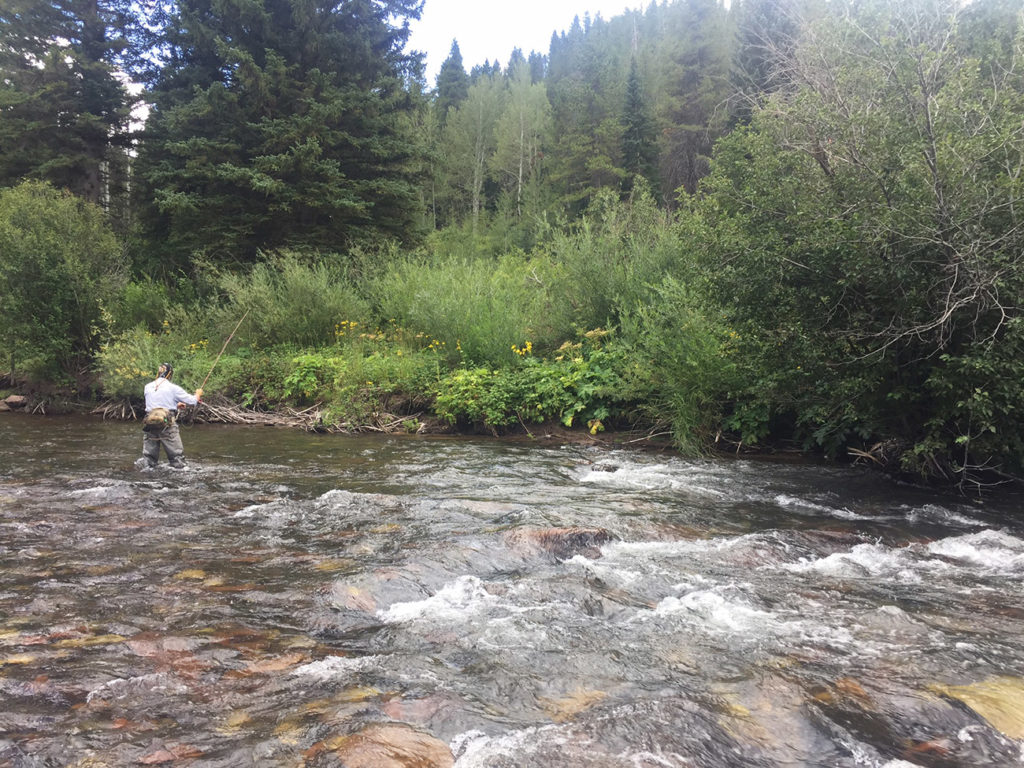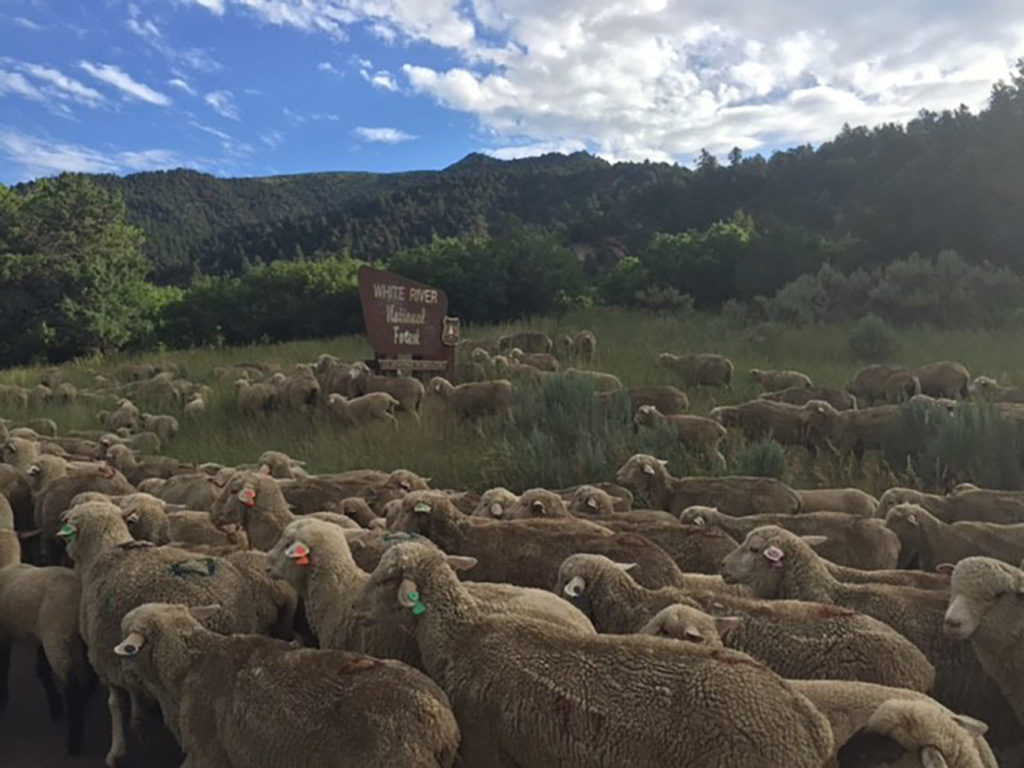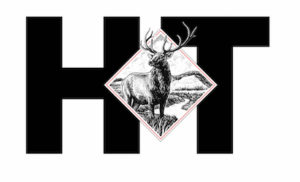
The White River National Forest generates $1.59-billion to the economy in Central Colorado, according to a report from the U.S. Forest Service, making it one of the highest economic generators among national forests and grasslands in the country. | USFS COURTESY PHOTO
A new report indicates that the White River National Forest directly and indirectly generates 22,230 jobs and produces a $1.59-billion contribution to the economy of central Colorado.
The U.S. Forest Service recently released a report looking at the economic contributions of about 70 national forests and grasslands around the West. The White River National Forest, at 2.3 million acres, far outpaced the others, thanks mostly to the swarm of annual visitors to ski areas and their spending.
The only other forest to top $1 billion in Gross Domestic Product was the Lake Tahoe Basin Management Unit, which is also heavily tourist oriented.
“I was pretty astounded how this forest was highest in GDP compared to the others,” said WRNF Supervisor Scott Fitzwilliams.
He said the study was one of the best efforts he has seen in quantifying the contribution of national forests on regional economies. The study underscores the responsibility of the federal agency and the communities around the forest, he said.
“I look at it as how we’ve got to keep care of it,” he said. “These are the areas we need to steward.”
The study looked at the economic contributions of national forests and grasslands in the federal fiscal year of 2019, prior to the outbreak of the COVID-19 pandemic. The study examines all types of contributions — summer and winter recreation, oil and gas extraction, livestock grazing and timber harvesting.
“National Forests and Grasslands provide multiple benefits to the American people and to local communities,” the study reads. “They provide clean air and water, preserve cultural resources and conserve lands for the enjoyment of present and future generations. They also support local economies through recreation, timber, energy, minerals and livestock grazing.”

The White River is strong on recreation and limited on the extractive industries. The forest spans over five ranger districts and includes 11 ski areas that use federal lands to varying degrees. The forest stretches from Rifle in the west to Summit County to the east, and from Independence Pass southeast of Aspen to the Flat Tops north of Glenwood Springs. The forest has 10 peaks over 14,000 feet in elevation, eight wilderness areas and 2,500 miles of trails.
The uses that are dependent on the forest vary from the glitzy ski areas in Aspen and Vail to livestock grazing around Rifle and Meeker.
The study estimates recreation visits to the forest creates 14,140 direct jobs. In the recreation sector, that includes everything from hunting guides to ski rental shops. When factoring in the ripple effect of jobs created in support of the businesses directly dependent on the forests, the employment from the recreation sector climbed to 21,290. The total labor income was $916.69 million.
The GDP produced by recreation alone was $1.53 billion, or 96% of the White River’s total GDP.
“You just don’t realize how powerful the recreation sector is,” Fitzwilliams said. “It’s skiing and a really robust outdoor economy.”
The study estimated that the White River National Forest receives 12.270 million recreation visits annually. Of those, 54% were due to downhill skiing. All other forms of recreation generated 45% of the visits, and wildlife-related visits were responsible for 1%.
The Forest Service estimated that 34% of the downhill skiing in the White River is generated by local residents and 66% from residents from out of the region. Spending by locals and travelers factors into the GDP.
“Visitors spend money on supplies, lodging, gas, food and services as a direct result of recreating on National Forests and Grasslands,” the study notes.
The study added that the jobs estimate was an annual average of full- and part-time positions as well as those that are seasonal and temporary.
Livestock grazing was a distant second to creation as an economic generator in the White River National Forest. Although ranching has faded in recent decades in the Roaring Fork Valley and Aspen in particular, it still remains a major economic force in the region.

Livestock grazing generated an estimated 300 total jobs and labor income of $6.85 million in 2019, the study said. The total GDP produced from livestock grazing was $13.55 million.
“For many, ranching is more than just employment — it is a way of life that supports long-standing family traditions,” the study said.
In the WRNF, 71% of the grazing is by cattle with 29% by sheep.
Timber harvesting on the forest created 240 jobs and $10.56 million in labor income in 2019, according to the report. The vast majority of commercial harvesting was for fuelwood, at 88%, the study said. Most of the remainder was timber for sawmills.
The total GDP from timber harvesting was just shy of $16 million.
While the amount of oil and gas extraction on WRNF lands ebbs and flows, it played a minor role in the forest’s economic contributions in 2019. It generated 10 total jobs in 2019 and a total labor income of $1,87 million, the study said. The contribution to the GDP was nearly $2 million.
The study factored two other sectors into the White River’s total GDP. The Forest Service’s operation of the forest is responsible for 210 jobs directly and 300 total jobs. That produces a labor income of $18.7 million and total GDP of $23.19 million, the study said.
The federal government’s payments to local governments — in large part due to a loss in property taxes — is responsible for an estimated $8.13 million in GDP.
Fitzwilliams said the economic report could be interpreted to mean the federal government ought to spend more on maintaining such a valuable asset. The WRNF sends about $25 million annually to the U.S. Treasury through fees it collects on everything from ski area use of public lands to guiding fee and grazing fees.
The White River receives about $13 million to $15 million annually in Congressional appropriations in recent years.
“What we get in taxpayer appropriations is less than what we’re sending back [to Washington, D.C.],” he said.
Republished with permission from the Aspen Daily News.
By SCOTT CONDON – Aspen Daily News
Special to the Herald Times


















